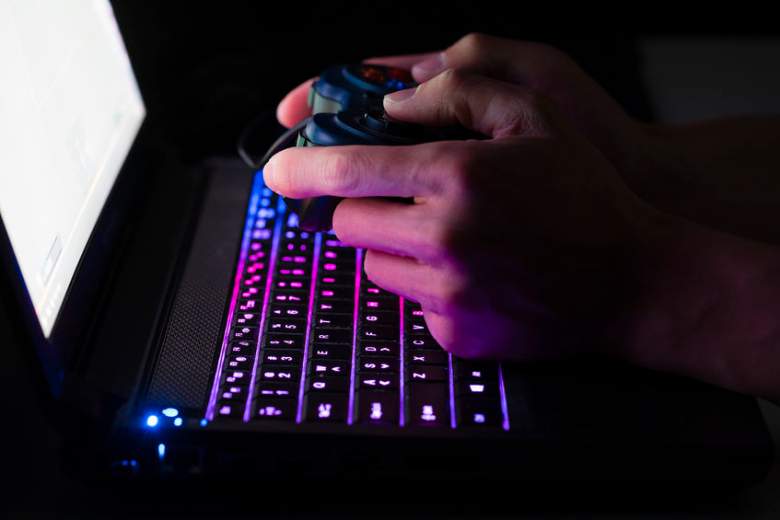
There was a timer when getting a gaming laptop meant compromising on almost everything — processor speed, storage capacity, screen size, and GPU performance. Those days are gone. Modern gaming laptops can hold their own against almost any desktop PC. And while mobile GPUs still don’t perform quite as well as their desktop brethren, the gap is almost imperceptible. Laptops running the Nvidia GeForce RTX 2080, for example, are formidable machines. An i9 laptop would be a decadent accessory for editing and managing a video or photo workflow from a DSLR camera or even an advanced point & shoot camera.
The RTX 2080 is not just fast, it’s somewhat future-proofed. The GPU is able to move enough pixels for 4K displays, and the on-board real-time ray tracing means that it can handle games hitting the market for some time to come. The RTX 2080 also boasts Nvidia’s DLSS — Deep Learning Super Sampling — a technology that employs AI to optimize frame rates in a way impossible just a year or two ago. That said, it’s now also possible to get a laptop running a GeForce RTX 3060 GPU for around the same price as the RTX 2080, so consider that option carefully as well.
Looking for a gaming laptop that can carry you well into the 2020s? Read on. We’ve rounded up the best RTX 2080 laptops running NVIDIA’s RTX 2080 GPU, and make specific recommendations for which is best at the end of the article.
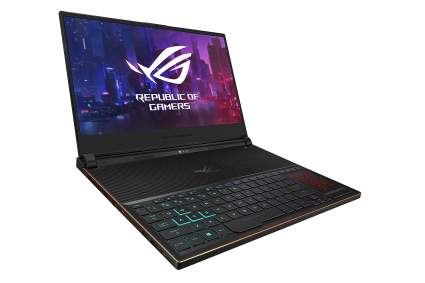
|
Amazon Customer Reviews
|
Price: $3,499.99 Shop at Amazon | Shop now Read our review |
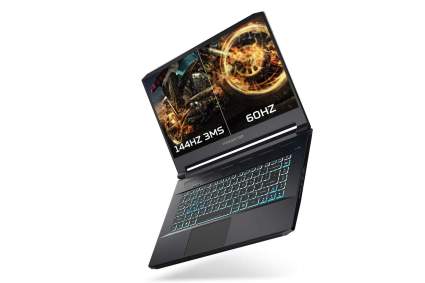
|
Amazon Customer Reviews
|
Price: $1,099.00 Shop at Amazon | Shop now Read our review |
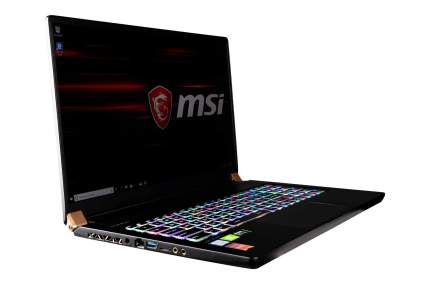
|
Amazon Customer Reviews
|
Price: $3,999.11 Shop at Amazon | Shop now Read our review |
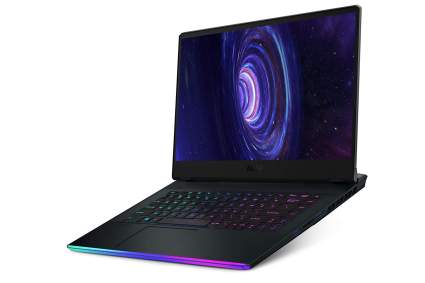
|
Amazon Customer Reviews
|
Price: $2,049.94 Shop at Amazon | Shop now Read our review |
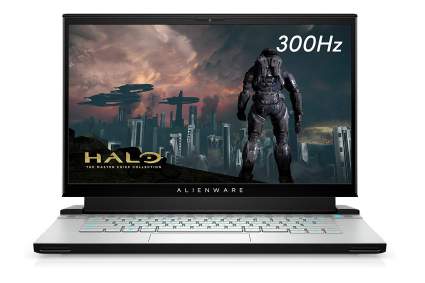
|
Amazon Customer Reviews
|
Price: $2,399.00 Shop at Amazon | Shop now Read our review |
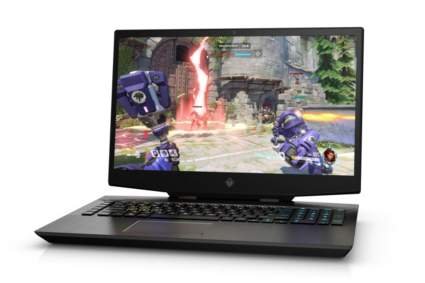
|
Amazon Customer Reviews
|
Price: $2,679.99 Shop at Amazon | Shop now Read our review |
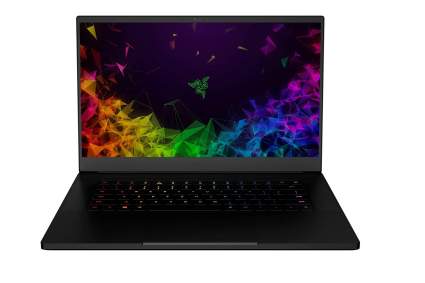
|
Amazon Customer Reviews
|
Price: $3,999.11 Shop at Amazon | Shop now Read our review |

|
Amazon Customer Reviews
|
Price: $3,199.99 Shop at Amazon | Shop now Read our review |
-
1. Asus ROG Zephyrus S
Pros:- Very thin and light
- Fast display
- Rugged
Cons:- No G-Sync
- Short battery life
- No per-key lighting
Processor Intel Core i7-9750H | RAM 16GB | Display 15.6 inches | GPU Nvidia GeForce RTX 2080 Max-Q | Hard drive 1TB SSD | Dimensions 14.2 x 10.6 x 0.6 inches | Weight 4.6 pounds
One of the thinnest RTX 2080 laptops around, the Asus ROG Zephyrus S measures just .6-inches thick. That means it’s running the Max-Q version of the RTX 2080, which has slightly fewer cores and runs cool enough to fit in a thin-and-light laptop. But it’s still an RTX 2080. The system’s diminutive size (it weighs a mere 4.6 pounds) means that it’s not going to exhibit bleeding-edge performance, but it’s still packed with components that would make many other laptops blush. It’s powered by an Intel Core i7-9750H processor and has 16GB of RAM. There’s a full 1TB of SSD storage space and there’s room inside for another drive.
The 15.6-inch display has a 144Hz refresh rate and a 3ms pixel response — the only thing this laptop is missing on the display front is G-Sync compatibility, which is frankly a disappointing oversight. On the other hand, the keyboard has four programmable lighting zones. Though each key isn’t individually assignable to RGB color, the lighting can be synced with compatible accessories like headsets and mice.
For connectivity, you get three USB 3.0 and a USB-C port, but because the case is so slim, there’s no room here for Ethernet. You do get both DisplayPort and HDMI though. If you plan to use the USB-C port, be advised that it’s on the right side of the case, so it might get in the way of your mouse. Even so, the overall design of the Zephyrus S is very cool. Despite the tiny bezel, Asus found room for a webcam. And the small and light design isn’t fragile. You get a very rugged chassis — Asus describes it as “military-grade toughness,” with the ability to survive multiple drops from a height of 30 inches. That’s thanks, in part, to a chassis that’s made from magnesium alloy rather than plastic. Aiding cooling is Asus’s active aerodynamic system, which mechanically raises the back of the laptop when you open the lid to aid airflow.
Unfortunately, don’t count on doing a lot with this laptop away from an outlet: At best, expect to see perhaps three hours of battery life.
-
2. Acer Predator Triton 500
Pros:- Thin and light
- All-aluminum design
- G-Sync 144Hz display
Cons:- Lackluster sound
- Ports get in way of mouse
- Hard drive could be larger
Processor Intel Core i7-8750H | RAM 16GB | Display 15.6 inches | GPU Nvidia GeForce RTX 2080 Max-Q | Hard drive 512GB SSD | Dimensions 14.1 x 10 x 0.7 inches | Weight 4.6 pounds
Is this cheating? The Acer Predator Triton 500, measuring just .7-inches thick, is not quite running a full RTX 2080. Instead, it is sporting the RTX 2080 Max Q, a hybrid 2080 that makes some small compromises on clock speed and power consumption to fit in the tight constraints of a thin laptop. So while it is still classified as a 2080 and can perform real-time ray tracing and all the other goodies the RTX 2080 is known for, it also won’t get so hot that it melts a hole in the bottom of the laptop and burns through to the center of the earth.
The trade-off seems worth it. While still packing high-end graphics, this laptop is super thin and light, making it very portable. It’s powered by an Intel Core i7 processor with 16GB of RAM, though it’s a little disappointing that this version of the Predator has just 512GB of SSD storage. The 15.6-inch display is backed with a 144Hz IPS panel that boasts a mere 3ms pixel response — this system is really designed for gaming. In fact, it even has Nvidia G-Sync, which prevents tearing and jitters in fast-moving gaming graphics.
Especially welcome: Despite the lightweight design, this system is made with lots of aluminum, so it has a solid and rugged feel to it, even if the overall aesthetics are a little mundane. Even so, Acer gets a lot of stuff right. There are a wealth of ports (two USB 3 and a USB-C on the right, with another USB 3 and Ethernet on the left), and an RGB keyboard with per-key programmable lighting. Disappointments? The sound is lackluster (bring headphones) and many of the ports are on the right side where cables will interfere with your mouse.
One thing definitely worth considering in the RTX 2080 calculus is cost. The Triton 500 isn’t inexpensive by most measures. But priced well under $2000, it’s at the lower end of what most similar laptops running 2020’s best video card cost. And that makes this a real contender, especially if you’re looking for a great value at the high end of laptop performance.
Want to make this laptop reach its full potential? Consider adding an external sound card — a USB-connected external DAC — to this laptop to dramatically improve its audio. And if you use your Acer Predator Triton 500 routinely at home, consider connecting it to a UPS so a power failure doesn’t lead to data failure.
Find more Acer Predator Triton 500 information and reviews here.
-
3. MSI GS75 Stealth Gaming Laptop
Pros:- Very thin and only 5 pounds
- Fast 144Hz IPS
- Per-key lighting
Cons:- No G-Sync
- No 4K display
- Plastic chassis
Processor Intel Core i7-9750H | RAM 32GB | Display 17.3 inches | GPU Nvidia GeForce RTX 2080 Max-Q | Hard drive 1TB SSD | Dimensions 15.6 x 10.2 x 0.75 inches | Weight 5.0 pounds
Like other thin-and-light gaming laptops, the MSI GS75 Stealth Gaming Laptop, is not quite running a full RTX 2080. Instead, it is sporting the RTX 2080 Max Q, a hybrid 2080 that makes some small compromises on clock speed and power consumption to fit in the tight constraints of a thin laptop. Yes, it’s classified as an RTX 2080 and brings most of the performance to bear on your games, but it runs a little cooler. That means it’s priced at the lower end of the spectrum and might be a good choice for a daily classwork laptop for students that is also a superb gaming PC.
With that out of the way, this is a powerful system. This version of the GS75 has an Intel Core i7 and 32GB of RAM, along with a generous 1GB SSD for storage. The GPU drives a large 17.3-inch display that’s backed with a fast 144Hz IPS panel, and it looks even bigger than it is since it’s surrounded by a thin 5.2mm barely-there bezel. Despite the tiny bezel, you’ll find a 720p HD webcam built-in. With a display that large and fast, would it have been great to see a 4K display on this laptop? Absolutely. But don’t get your hopes up; there’s just a typical FHD 1920 x 1080-pixel display here. Nor will you find any G-Sync, a major disappointment for a gaming rig.
There are some other nice extras here. The GS75 has a micro SD slot for reading media cards, three USB 3 slots and a USB-C, and a Steel Series keyboard with per-key RGB lighting and anti-ghosting, which helps both in gameplay and productivity. And the battery should last about five hours in normal use. And the whole thing weighs just five pounds. Unfortunately, some of the weight savings comes from the light plastic construction, rather than an all-aluminum case like you’ll find in some other laptops.
Find more MSI GS75 Stealth Gaming Laptop information and reviews here.
-
4. MSI GE66 Raider
Pros:- Super fast CPU and oodles of memory
- 300Hz display
- Huge battery
Cons:- Very expensive
- Ports scattered on all three sides of laptop
- No 4K display
Processor Intel Core i9-10980HK | RAM 32GB | Display 15.6 inches | GPU Nvidia GeForce RTX 2080 Super | Hard drive 1TB SSD | Dimensions 14 x 10.5 x 0.9 inches | Weight 5.25 pounds
What do you get when you combine the fastest, newest components with a superb display and a generous battery life? A gaming laptop that equals the performance of most desktop PCs. Also, a price tag that leaves a bit of a crater in your wallet. The MSI GE66 Raider does both of those things, but if you’re looking for a performance powerhouse, this is a top contender for your attention. This latest iteration fo the Raider comes with the fastest CPU currently available, the Intel Core i9-10980HK, with a massive 32GB of RAM and the RTX 2080 Super. The Super is about 10% faster than the RTX 2080 and lands between the RTX 2080 and the 2080 Ti in GPU performance. For storage, you get a full 1TB of SSD.
You could actually use this as a desktop replacement laptop if you were so inclined, though keep in mind that this rig has a 15.6-inch display, not a 17-inch screen. But if you connect it to an external monitor, that might not even matter very much. Either way, the display is excellent. The FHD 1920 x 1080-pixel screen is backed by a 300Hz IPS panel. That’s as fast as they come and you’d be hard-pressed to find a better laptop display for gaming.
For connectivity, the GE66 Raider has three USB 3.0 ports and a USB-C, along with Ethernet, HDMI, DisplayPort, and even an SD Card reader. Some of those ports are on the right side of the laptop where they’ll interfere with your mouse, which is never a good thing, but you can’t fault MSI when it comes to giving you all the ports you need. MSI also delivers full RGB lighting, with per-key programmability.
Finally, MSI claims that the laptop has the “legal flight limit” on battery size — 99whr. I wasn’t able to confirm if the TSA really limits the size of laptop internal batteries, though I did find that you can carry external batteries in excess of 100whr onto flights “with TSA permission.” nonetheless, there’s no disputing that this gives you a solid runtime, likely well in excess of five hours.
This laptop is also made my list of the best Intel Core i9 laptops, so check out that article to see your other choices if an i9 CPU is as important to you as the GPU.
-
5. Alienware m15 R3 Gaming Laptop
Pros:- Alienware aesthetics
- Large 1TB SSD
- 300Hz refresh rate
Cons:- No per-key lighting
- No biometric security features
- Pay a premium for ALienware name
Processor Intel Core i7-10875H | RAM 32GB | Display 15.6 inches | GPU Nvidia GeForce RTX 2080 Super | Hard drive 1TB SSD | Dimensions 10.87 x 14.19 x 0.81 inches | Weight 5.5 pounds
Alienware has a reputation for offering high-performance laptops at premium prices. In fact, you’re often paying just as much for the logo and the aggressive styling, because similar performance can often be had for less. If you choose to buy the Alienware m15 R3 Gaming Laptop, though, you’re getting a lot of value for the money. Dell (Alienware’s parent company) has built this machine out of high-end materials like magnesium alloy, copper and steel, with very little plastic in sight. The laptop also includes custom cooling with vapor chambers between the CPU and copper heat pipes to keep the system running cooler and faster.
The guts of the laptop are built on an Intel Core i7 and the start of the show, an Nvidia GeForce RTX 2080 Super. The 15.6-inch display is just full HD, not 4K, but that’s excusable, since it runs at a speedy 300Hzx refresh rate, ideal for gaming. You get a full terabyte of storage and extras like a 4-zone RGB keyboard with N-key rollover and anti-ghosting tech. You can upgrade to per-key lighting, but you don’t get that at this price point.
Find more Alienware m15 R3 Gaming Laptop information and reviews here.
-
6. HP Omen
Pros:- Affordable performance
- Distinctive appearance
- Media card reader
Cons:- Price tag is high
- Battery life is mediocre
- Heavy if you want to take it on the road
Processor Intel Core i9-10885H | RAM 32GB | Display 15.6 inches | GPU Nvidia GeForce RTX 2080 Super | Hard drive 512GB SSD + 1TB HDD | Dimensions 14.17 x 10.35 x 0.79 inches | Weight 5.3 pounds
In a crowded laptop field, the HP Omen is visually distinctive. A lot of laptops try to stand out with aggressive gamer aesthetics, but HP has given the Omen a distinctive lower bezel that makes the display look like it’s standing up on some sort of pedestal. Not everyone’s cup of tea to be sure, but not many other laptops look much like this machine.
And it would be nice if the bezel was smaller all around — it gives the laptop a less contemporary appearance — but it’s holding up an excellent 15.6-inch display backed with a 300Hz IPS panel with HP’s anti-glare technology. It’s a standard FHS 1920 x 1080-pixel resolution. Elsewhere inside, the system features an Intel Core i9-10885H CPU and 32GB of RAM — speedy even for this caliber — and a 512GB SSD for system files, paired with a 1TB HDD for data.
The laptop is equipped with a good selection of ports and connectors. The right side sports a USB 3.0 input and a media card reader; the other side has two more USB ports and a USB-C, not to mention HDMI, DisplayPort, and Ethernet.
The keyboard is comfortably full-sized and offers backlighting in four different zones (the WASD keys are one zone unto themselves, naturally).
-
7. Razer Blade 15
Pros:- Fast 240Hz display
- Windows Hello biometric lock
- All-aluminum thin case
Cons:- No G-Sync
- Hard drive just 512GB
- No 4K display
Processor Intel Core i7-8750H | RAM 16GB | Display 15.6 inches | GPU Nvidia GeForce RTX 2080 Max-Q | Hard drive 512GB SSD | Dimensions 9.3 x 14 x 0.7 inches | Weight 4.6 pounds
One of the things that’s easy to love about the mid-priced Razer Blade 15 is that Razer knows when to go all-in on technology and when to ease back the throttle to make the system (relatively) affordable. What you get here is a laptop that respects your wallet and gives you the best selection of components without sending you to the poorhouse.
For example, this Razer builds this system around the Max-Q version of the RTX 2080. Close to the fastest GPU money can currently buy, it’s sized for the relatively thin frame of the Blade 15. It’s accompanied by an Intel Core i7-8750H and a 512GB hard drive — probably enough storage space for most users. The RTX 2080 is driving a super-fast 240Hz IPS panel that’s displaying a FHD 1920 x 1080-pixel screen, but there’s no G-Sync here (though at 240Hz, it’s not clear it’s needed).
The ports are almost all here, though they’re in weird positions. You’ll find HDMI, DisplayPort, USB 3,0 and USB-C ports on the right side of the case, with more USB 3.0 ports on the left. Good luck not snagging that rat’s nest of wires on your mouse.
Razer is known for quality builds, and this laptop feels premium from top to bottom. It has a unibody all-aluminum case and the lid has a relatively narrow bezel protecting the screen. Speaking of bezel, the laptop includes a Windows Hello-compatible webcam, so you can unlock it with biometric face recognition. There are some other welcome features in the Razer Blade 15. Expect to get close to five hours of runtime when using the laptop for ordinary productivity tasks, and that’s including using the keyboard’s per-key RGB lighting.
-
8. Asus ROG Strix Scar 17
Pros:- Very fast 300Hz display
- 2TB storage
- Keystone II storage
Cons:- No biometric security
- No 4K display
- Very expensive
Processor Intel Core i9-10980HK | RAM 64GB | Display 17.3 inches | GPU Nvidia GeForce RTX 2080 Super | Hard drive 2TB SSD | Dimensions 15.7 x 11.6 x 1.1 inches | Weight 6.3 pounds
NVidia’s GeForce RTX 2080 Super lands somewhere between the stock RTX 2080 and the bleeding-edge RTX 2080 Ti. It’s about 10% faster than the RTX 2080 and offers enough of a performance boost that gaming fanatics can justify spending a little more money to get this intermediate card. And that’s what you’ll find in the Asus ROG Strix Scar 17, one of the most expensive RTX 2080-based laptops you can buy.
So what do you get for all that money? For starters, an Intel Core i9-10980HK, currently the top-tier processor. It’s paired with a genuinely massive 64GB of RAM and 2TB of SSD storage. (There’s another drive bay if you need more storage.)
There’s a lot more going on here as well. The laptop has an enormous 17.3-inch screen running a FHD 1920 x 1080-pixel display. But rather than just pack in more pixels to give you a 4K display, this one runs at a stunning 300Hz with a 3ms pixel response and includes G-Sync to prevent visual tearing during gameplay. The keyboard features full per-key RGB lighting, and the Scar has Asus’s Keystone II, which is an NFC-enabled key that fits in a slot on the side of the chassis. The keystone can be used to store personalized settings, quick-launch apps, or even serve as an encrypted shadow drive.
Asus smartly keeps all the ports off the right side of the laptop to avoid getting in the way of the mouse. You’ll find three USB 3.0 ports, a USB-C, Ethernet, HDMI, and an audio port to plug in your noise-cancelling headphones.
Find more Asus ROG Strix Scar 17 information and reviews here.
RTX 2080 vs. RTX 2080 Max-Q vs. RTX 2080 Super
The Nvidia GeForce RTX 2080 represents the cream of the crop in Nvidia GPUs. It's built on the Turing architecture, which represents Nvidia's state of the art in graphics card design today. You get Nvidia's Tensor cores, which use AI to improve game quality while reducing the workload on the GPU. There's Nvidia's Deep Learning Super Sampling (DLSS) which improves anti-aliasing. And there's support for real-time ray tracing, which is such a profoundly important development in gaming that it deserves an article all on its own. No, there aren't a lot of games that take advantage of ray tracing right now, but it's only going to become more important as time goes on.
There are a few variations of the RTX 2080 for sale in laptops today. First, there's the standard Nvidia GeForce RTX 2080. This GPU is unambiguously faster -- by a wide margin -- than previous generation GPUs and represents the best graphi9cs performance you can get in a laptop. It also puts real-time ray tracing in your hands. While there's not a lot of ray tracing out there yet, make no mistake: as 20xx-caliber GPUs get cheaper and more common, this will be the future of gaming and interactive video.
The Nvidia GeForce RTX 2080 Max-Q is Nvidia's version of the RTX 2080 for thin laptops that don't have as much room to dissipate heat. Consequently, it is designed to double the power using a variety of techniques that include better power distribution and lower voltage memory.
In addition, you can get the Nvidia GeForce RTX 2080 Super, which today represents the fastest video cards available for laptops. It's faster than the stock RTX 2080, but not as fast as the RTX 2080 Ti, which is only available for desktop PCs.
How to Shop for a Laptop
Knowing what kind of GPU you want in a laptop is only a small part of the buying decision. There are a lot of factors to consider, not the least of which is knowing what components you want to get.
Choose your components. Which CPU you choose is important, but if you're shopping for an RTX 2080-based laptop, the good news is that your options are limited. You won't be interested in an Intel Core i3 or i5, since they're underpowered for the kind of performance you need for gaming and creative production. Limit your selection to an i7 or i9. An i7 is fine for most applications, but if money is no object and you want a system fast enough to last an extra year before you need to upgrade, get an i9.
16GB is the minimum amount of memory you should consider, but 32GB is a good choice if you plan to do a lot of memory-intensive photo- and video editing.
These days, all laptops ship with an SSD (solid state hard drive) You should get no less than 500GB, but a 1TB SSD is better if you plan to install a lot of large games and apps. Many experts recommend dividing your storage across two drives: An SSD for your system files and a second drive (either SSD or HDD) for data. That's a matter of opinion but beware of RAID 0 configurations that promise faster access speeds by combining two drives into a single virtual drive, because a corruption or failure in either drive can catastrophically destroy 100% of your data.
Screen type. While there are several kinds of LCD panels out there, no serious gaming laptop is going to offer you anything but an IPS (In-plane switching) panel, or possibly a VA (Vertical Alignment) panel.ISP is the way to go, and look for panels with a faster-than-average refresh rate -- 144Hz or better. OLEDs (Organic Light Emitting Diode) are just starting to find a place in laptop displays. They're generally pricier but are better than IPS LEDs for gaming in almost every imaginable way.
The Best Value in RTX 2080 Laptops
There are a lot of laptops to choose from, even in the relatively stratified environment of RTX 2080 models. Which one you choose depends on your budget as well as what kind of portable PC experience you want to prioritize.
If you're trying to stick to a budget, you can get a lot more mileage out of your dollars by downgrading to a laptop with an Nvidia GeForce RTX 2070 graphics card. The RTX 2070 is a lot more affordable, but is still in the same family as the RTX 2080, which means it can handle modern games with only moderate compromises, is VR-ready, and can handle real-time ray tracing. It just won't perform quite as well and you might need to upgrade sooner. But if an RTX 2080 is a priority, then models like the Acer Predator Triton 500 and HP Omen will serve you well.
If you want a strong performer that makes fewer compromises without completely obliterating the bank, it's hard to dislike the MSI GS75 Stealth, which has a fast display and per-key lighting, while still qualifying as a thin and light laptop. In fact, this may the single best mid-range RTX 2080 system available.
But at the high end -- where laptops can cost as much as an inexpensive car -- the Razer Blade 15 wins our heart thanks to its stellar performance and 240Hz display.
See Also: